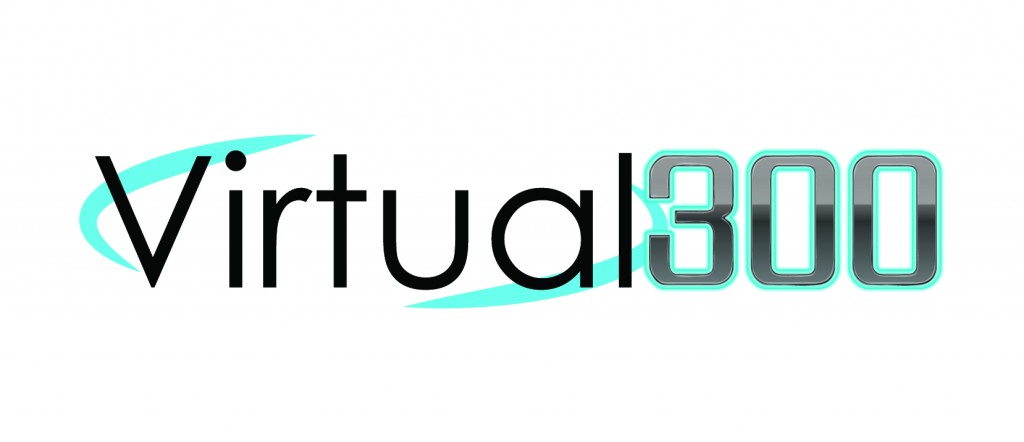#Virtual300 Top Ten

In my last ever college semester, I took a class every aspiring journalist should sign up for in this day and age: Online Journalism (also called Virtual300). Reporter-turned-educator Jill Falk, associate professor of communication at Lindenwood University, was the instructor.
Here are my top ten takeaways from the class – lessons relevant to journalism, multimedia storytelling, social media and much more. Enjoy!
In order to become a successful journalist today, you need to be a jack of all trades
While it’s important to find your niche/beat and immerse yourself in it to the point where you become an expert, today’s journalists need to be good at many things. The reporters of my generation cannot afford to be one-trick ponies; they have to be jack of all trades (without spreading themselves too thin of course).
The internet is abundant in free and easy to use online multimedia tools. There are no excuses not to take advantage of them
In this day and age, there seems to be an online program for virtually everything. Do you want to create an infographic but don’t have any experience with Photoshop? Try Infogr.am or Piktochart. Passionate about shooting video? Check out Videolicious! You want to create your own website without learning code? Try Strikingly or WIX. You’re more interested in publishing your own multimedia stories online? Then Creatavist is for you.
These tools are not only free (in the basic version), but also pretty straightforward, easy to use and save you a ton of time. Most importantly, though, they empower you to become a transmedia storyteller with the ability to publish compelling, in-depth content that speaks to veaders (mixture of reader and viewer) like a newspaper article never could.
Multimedia Journalism is the future
Multimedia storytelling is gaining traction quickly and is becoming increasingly popular. Stories like the New York Times Snowfall multimedia piece are changing journalism and attracting millions of veaders. Instead of simple stories posted on websites adorned with a few pictures and an occasional video, the new generation of stories told online are interactive, interesting, visually stimulating and compelling. They combine text, videos, a good narrative, graphics and other elements to create a holistic piece of journalism.
The greatest strength of multimedia storytelling is that it allows veaders to look at a matter from different angles without giving a final answer, thus forcing us to reflect on the significance of the story and come up with our own interpretation. Here are three multimedia journalists who succeed at that.
Conclusive research has shown that people learn better by doing and that they actually remember more if they associate the subject matter with an experience or an emotion. Videos and the graphics not only make articles more tangible and real because they speak to several of our senses, but they are also the reason that veading stories becomes an experience in itself – and hence gets under our skin. Seeing and hearing things instead of simply reading about something makes for a vivid multidimensional experience that is easier to digest and to remember.
The things we learned in school will be outdated sooner rather than later. Being able to adapt is paramount
The industrial age when people stayed with one company their whole career is long gone. In the age of post-industrial journalism, it is now common to change jobs every few years and reinvent one’s self several times before we retire, which is by no means a guarantee. We have no idea now what we will be doing in five or ten years, let alone what we’ll need to be successful. We will probably be working in industries and have jobs that don’t even exist yet. The following video show you how journalists can adapt.
Since we cannot predict how the world and the job market is going to look like in the future, being able to pivot and adapt is absolutely essential. The more and different things we know, the better we are going to be able to make the world up. Get your hands on as many different things as possible. Get good at detecting new trends. Be an early adopter. And don’t be afraid to give up something old for something new, even if the old was of great service to you.
You don’t need a lot of money or fancy equipment to tell a good multimedia story
Online journalism doesn’t have (and need) the same standard as a news package for a prime time evening newscast. Since the production value doesn’t need to be as high, a DSLR or even an iPad armed with the pro version of Videolicious will get the job done. Also, online audiences tend to accept lower quality. Now, that doesn’t mean that journalistic ethics can be disregarded. Naturally, a multimedia piece should meet the same standards as a newspaper article or a radio podcast. However, you can create more with less without sacrificing too much.
Buy some equipment for a few hundred or a few thousand bucks and get going. You’ll be surprised how much you can do without a satellite van and a television studio.
Every journalist should adopt an entrepreneurial mindset
Journalism as a profession has undergone a profound, all-encompassing change. In this day and age, reporters need skills that go far beyond classic requirements – both regarding their attitude and their role as journalists. Old hierarchy structures, job prospects, linear career steps and ways to make money have been disrupted by new jobs, new ways to make a name for yourself, and new revenue streams.
The time when journalists were able to focus exclusively on producing content, i.e. working journalistically, is over. It is no longer viable to only be a story teller. Nowadays, journalists need to think about so much more: how to disseminate their stories in the most effective (and efficient) way, how to make it visually appealing, how to spread the word on social media, and much more. One of the most important things that comes with the new era in journalism, which is something many journalists still dread, is how to monetize their stories.
Mediapreneurs need to have a solid understanding of the key forces in a media business today: product, audience, revenue, marketing, distribution, costs and risks. They need to learn about changes brought about by digital: new efficiencies, changed economic relationships as well as the growth of platforms and networks. And, they need to learn how to find opportunities in disruption.
Every journalist – nay, every American – should be familiar with Section 230 of the Communications Decency Act
In 1996, Congress enacted the Communications Decency Act to “address confusion about the responsibility of computer services for defamatory, pornographic and other potentially harmful postings by Internet users.” Section 230 states that “No provider or user of an interactive computer service shall be treated as the publisher or speaker of any information provided by another information content provider.” With this passage, the CDA effectively removed the distinction between publishers and distributors, “providing both safe harbor from defamation and other claims”.
In other words: Section 230 grants almost comprehensive immunity for internet service providers, search engines, social networking sites, discussion forum hosts, etc. As long as we don’t materially change the meaning of a tweet when we retweet it, for instance, we will not be liable even if the original tweet is defamatory.
Personal branding is important – and fun
Since I started my own blog (yeah, this one) in the fall of 2013 and I’ve come to realize that it’s a fun and essential thing to do if you’re a journalist, albeit its arduous nature. Establishing your own, distinct brand not only allows you to hone your writing skills, but it also lets you cover topics you may not be to able to write about for your class or your job. Moreover, you can use your website as your personal portfolio. The following video shows you how important personal branding is in the age of social media.
Establishing your personal brand takes hard work, time and consistency. It’s easy to find excuses to not blog for a week, especially if you don’t have any content handy. However, I dare say that everybody has at least some digital material lying around that you can repurpose and tweak a little to make it fit for your blog. Quality and consistency matter equally.
What’s better than being a writer? After all, all you do is think about life!
The possibilities are endless, so find a niche
We should find something we’re passionate about and immerse ourselves in it completely. No matter if we work for a mainstream media outlet or run our own hyperlocal news site, finding a niche and attacking it in a way that no one else can is what will set us apart. Give your audience or customers real value in exchange for their time and money.
Whether you think the future of journalism is daunting or you think it’s bright, you’re right
Life is what you make it. The same goes for journalism. We can sit around waiting for the next wave of innovation to roll over us or adapt and be part of the solution. I suggest we do the latter. In this time of disruption and upheaval, trying to protect our position and market share is certainly not the way to go.
Great challenges come with great opportunites and great rewards. In order to recognize opportunities and take advantage of them, we need to adopt and cultivate an entrepreneurial mindset. So get out there, be curious and never settle. After all, the best way to predict the future is to invent it.
Tags
beat, Benjamin Bathke, benjaminbathke.com, blogging, business, CDA, Communications Decency Act, Creatavist, DSLR, early adopter, entrepreneurial journalism, entrepreneurial mindset, entrepreneurship, future of journalism, infogram, infographics, Journalism, Lindenwood University, maintstream media, media business, multimedia storytelling, New York Times, newscast, niche, online journalism, personal branding, piktochart, post-industrial journalism, production value, Section 230, snowfall, social media, strikingly, television studio, Twitter, Videolicious, virtual300, WIXRecent Posts
 Deutsche Welle – German bank blacklist of Yemeni nationals widensbenjamin - 02 May
Deutsche Welle – German bank blacklist of Yemeni nationals widensbenjamin - 02 May Deutsche Welle – The future of driving is (almost) herebenjamin - 02 May
Deutsche Welle – The future of driving is (almost) herebenjamin - 02 May A Reading Guide to the Accountability of Humanitarian Aidbenjamin - 02 December
A Reading Guide to the Accountability of Humanitarian Aidbenjamin - 02 December


